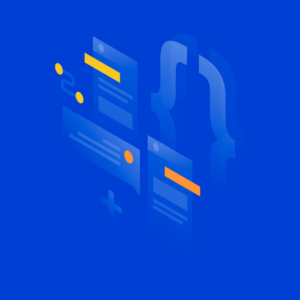
Web Design
Web design is the practice of creating engaging and functional websites with the purpose of promoting human interaction by a web designer. A web designer’s job is to create a website that not only looks nice but is also simple to use by combining the skills of graphic design, programming, and other areas of expertise.

At the outset of any web design project, the designer will meet with the client to learn more about their company, their intended audience, and their desired outcomes for the website. A wireframe, a simple sketch of the site’s structure and content created by the web designer follow. When deciding where to put the page’s text, graphics, and other components, the wireframe will be consulted.
After the client approves the wireframe, the web designer moves on to the design phase, where a visual representation of the site is created. The client’s brand’s intended demographic, and website objectives will influence the design. The design process will continue iterating on the concept until the end user is completely satisfied.
After the design has been accepted, the web designer will go on to the development phase, where the actual HTML, CSS, and JavaScript code for the site will be created. An e-commerce platform or content management system may be required, and the designer of the website is responsible for incorporating them into the final product. To ensure the website is up to par and suitable for the customer, it will be put through a series of tests and tweaks.
The duties of a web designer might extend beyond the initial build of a site to include its ongoing upkeep and modification. It might include upgrading the website’s content, features, or bug fixes. The designer of a website may also be responsible for making it usable by people of varying abilities.
Web designers need to be well-versed in both design theory and web development languages and frameworks. They need to be able to communicate well with customers and other stakeholders to make sure the website is tailored to their requirements.
Because of the dynamic nature of the web, it’s crucial that designers keep abreast of emerging tools and aesthetics. Participating at conferences, taking online courses, or just keeping up with the literature are all viable options for this.
In conclusion, web design is essential to the success of every business with an online presence, and web designers are indispensable to the process of developing sites that meet users’ needs while also satisfying their aesthetic preferences. A web designer, whether working on a tiny personal site or a major corporate site, has to be able to employ a mix of design and technical abilities to build a site that satisfies the requirements and expectations of its customers.
Web Designer
A web designer is an expert in the field of website design and development. They use several methods, including graphic design, programming, and others, to make websites that are aesthetically pleasing, functional, and simple to use.
A web designer’s work is essential since it is their job to make sure that the site’s layout and features are just right for the customer and their intended demographic. A web designer needs expertise in both traditional design concepts and modern web development tools and languages.

After the client approves the wireframe, the web designer moves on to the design phase, where a visual representation of the website is created. The identity of the client, their intended market, and their desired outcomes for the website will all influence the design. To ensure the final product is to the client’s liking, it will be inspected and tweaked as necessary.
As soon as the design has been accepted, the web designer will go on to the development phase, when the actual HTML, CSS, and JavaScript code will be created. The web designer will also be in charge of incorporating other systems, such as a content management system or e-commerce platform, that may be required. Testing and adjustments will be made to the website until it is fully functional and satisfies the requirements of the customer.
It is possible for a web designer to be in charge of the site’s ongoing upkeep as well as its initial creation. Among the possible actions here are the elimination of errors, the introduction of brand-new functions, and the revision of existing information. Accessibility for people of all abilities should be a primary concern for every web designer.
Web designers require excellent interpersonal skills because they must collaborate extensively with clients and other interested parties to ensure that the final product accurately reflects their needs and expectations. Web design projects often have high time limits, therefore the designer also has to be able to work effectively under pressure and fulfill deadlines.
There is a steady stream of new developments and trends in the web design industry, so it’s important for professionals in the sector to keep up with the times. Keeping up with the state of the art in your industry may include participation at conferences, enrollment in online courses, or even just keeping up with the news.
To sum up, web design is a dynamic and intricate industry, and designers are crucial in the production of usable and visually beautiful websites. A web designer, whether working on a tiny personal site or a major corporate site, has to have the technical and design abilities to build a site that is functional and aesthetically pleasing for its customers.
Read More About Web Designer: Click Here
Read About Web Developer: Click Here





